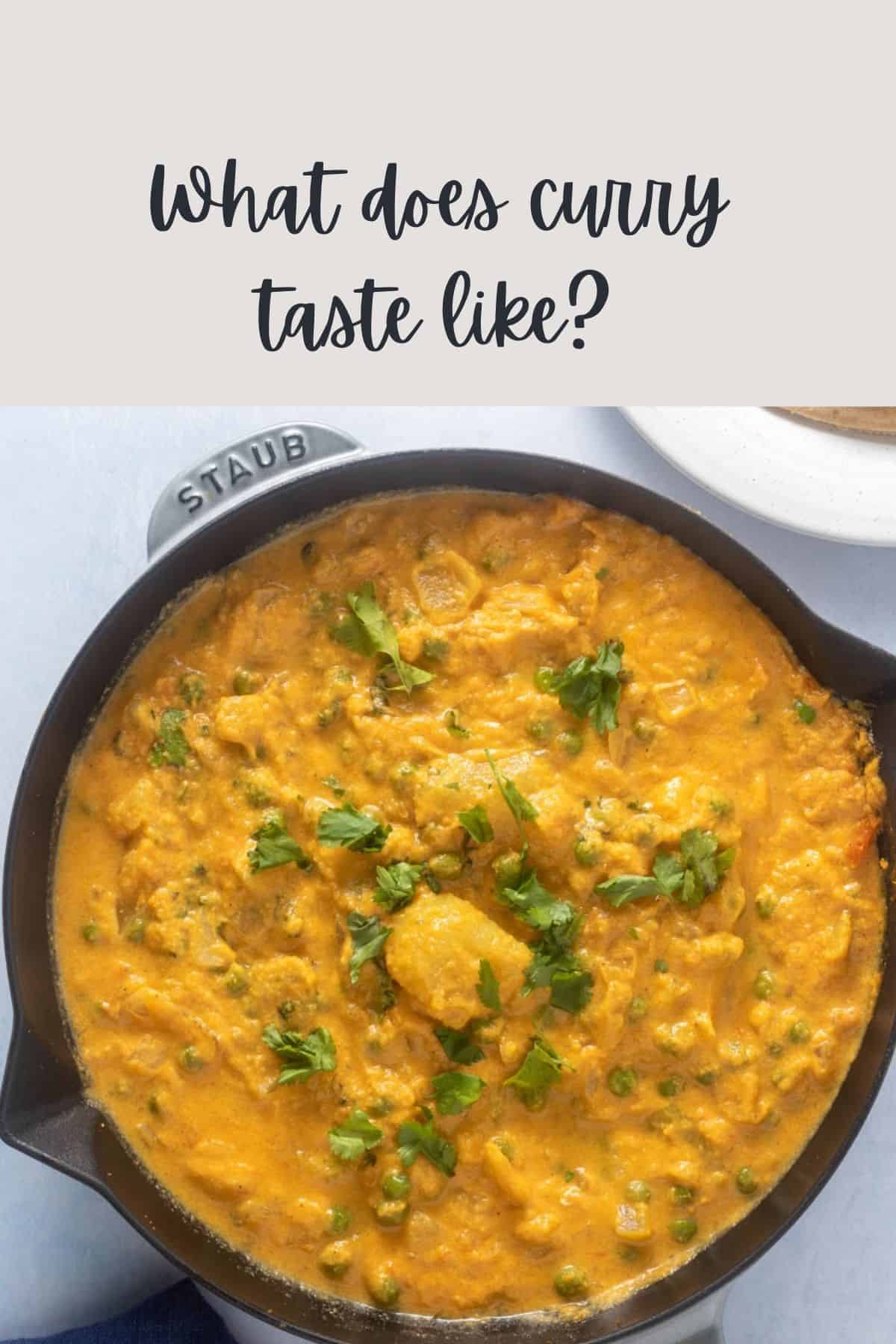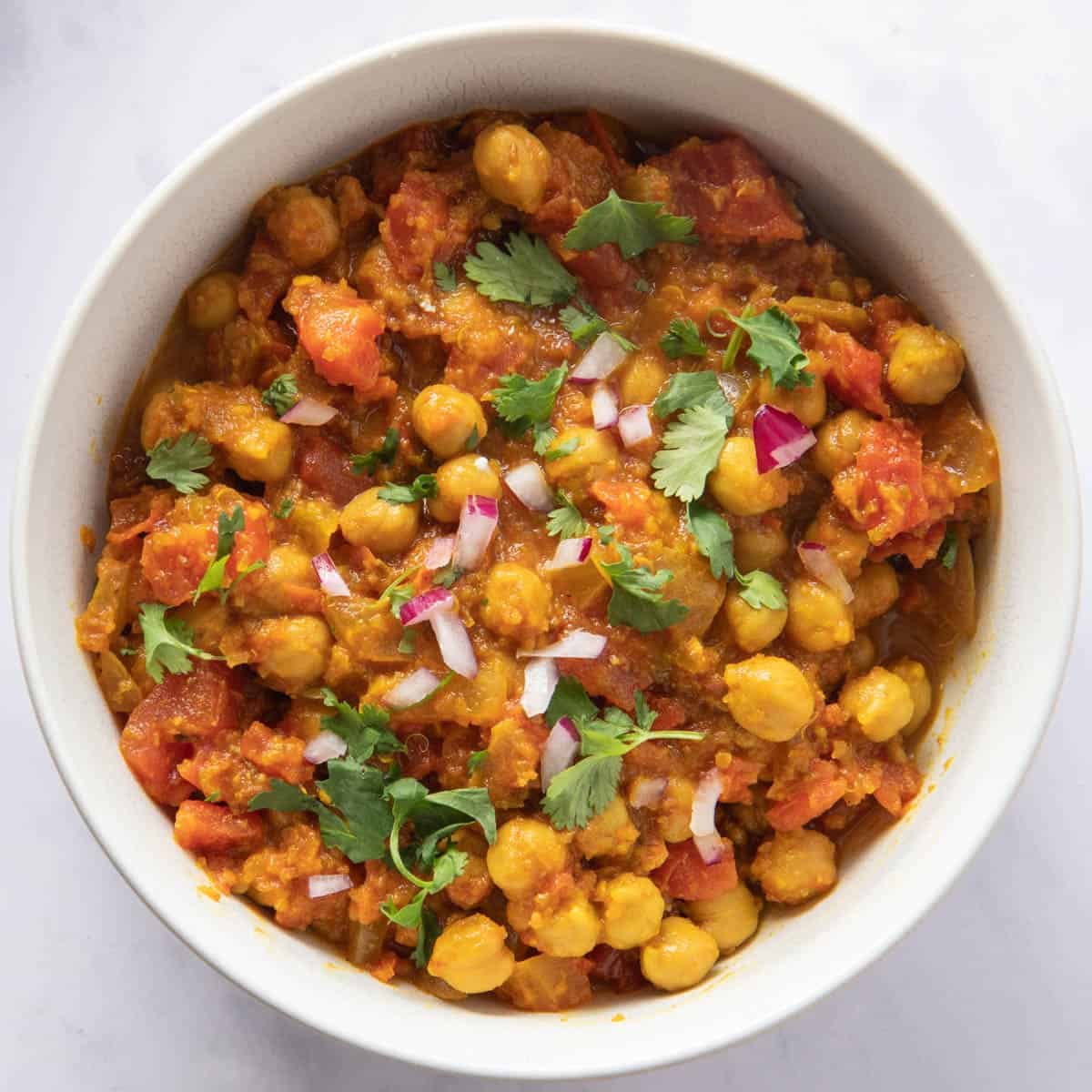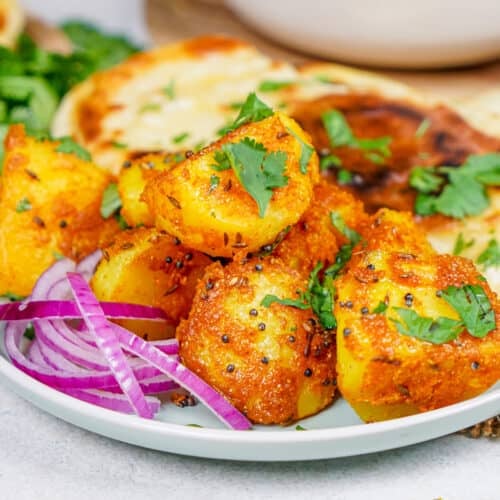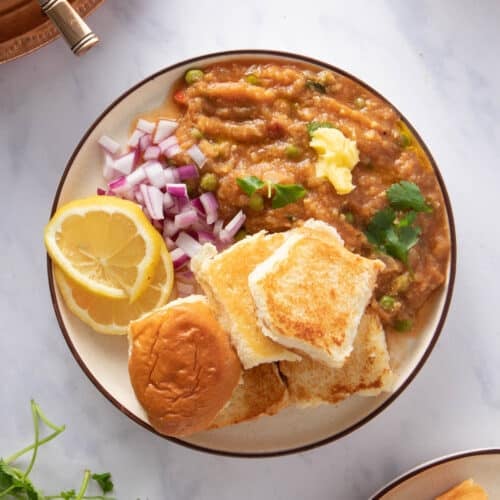What is curry?
I usually don’t go into a lot of history on my posts (no stories of my old grandmother’s dog that reminds me a specific cookie, I promise!) But in this instance, it’s actually good to understand where curry comes from in order to best understand what it tastes like. So read on to learn more about the different types of curry and what each curry tastes like so you can pick out the ones you want to try! Oh, and don’t forget to sign up for my Indian Cooking 101 newsletter to get a cheat sheet for Indian curries! I’ll see you there! “Curry” comes from the Tamil word kari, meaning “sauce” (I’m Tamil!) It can represent a range of dishes from both Asia and most notably, Indian food. And there are so many different variations from different parts of Asia (e.g., India, Malaysia, Japan, etc.) We can’t be sure when curry was invented. But there is ample historic evidence (dating back thousands of years!) showing that spices ground with mortar and pestle into a paste eventually morphed into what we know as curry today. But curry is also the result of thousands of years of trade between India, the Indian subcontinent and other parts of Asia. It has been influenced by the Muslim settlers of Northern India, the Portuguese trading centers in West India, and many other dynasties across India!
What is curry made of? What does curry taste like?
Regardless of where it comes from, it’s made with a base of onion, ginger and garlic. Its bolstered with a base (e.g., tomato, pureed peppers, yogurt or cream, cashew, etc.) but three factors determine what curry tastes like. These are:
How are curries from different parts of Asia different?
Indian curries alone boast of a staggering diversity. The most common ones include tomato-based curries like chana masala, creamy curries like korma, and lentil-based curries like dal tadka and are served with basmati rice. You can make these with lots of vegetables and meats. They vary based on the state and culture they’re from. Don’t forget to sign up for my Indian Cooking 101 newsletter to get a cheat sheet. Food historian Dave DeWitt (author of A World of Curries), once counted 66 different curry ingredients while he was writing his book, so it’ll be impossible to talk about all the non-Indian types of curries below. I’ll try my best but if I forgot a curry you love, let me know in the comments!
Thai curries are probably the next most famous type of curries, and use ginger, and lemongrass as key ingredients. They are red curry (kaeng phet, with chili powder, red curry paste), yellow curry (kaeng kari, with turmeric and yellow curry paste), green curry (kaengkhiao wan, with cilantro, kaffir lime leaf and basil) or Massaman (fusion of Indian and Thai flavors and a mild taste!) Japanese curry is typically milder. You typically use sweet spices and serve it with rice or noodles (e.g., karee raisu, curry rice or karee udon, curried wheat noodles). Curry roux bars (blocks of curry spices, similar to a bouillon cube) are also very popular in Japan! Malaysian curries are more of a noodle dish as well. Laksa, a popular Malaysian noodle soup has deep-fried tofu and bean sprouts. Trinidad and Tobago, and Caribbean curries have a strong Indian influence but are much spicier than Indian curries. Many recipes use Scotch Bonnet chilies, and local herbs like shado beni (similar to cilantro) to create a unique flavor and earthy taste. South African curry is heavily influenced by Malaysian curries, so they feature nuts and coconut milk. Bunny chow was developed as a way to serve black South Africans during apartheid, and is curry dumped into a hollowed-out loaf. United Kingdom: I can’t really talk about curries without talking about Britain. Funnily, a lot of dishes that people tend to associate with Indian cuisine outside of India tend to be British dishes! For instance, chicken tikka masala is quite different from the butter chicken it’s based on.
Relationship between curry leaves, curry powder and curry paste
This is one of the most common questions I’m asked. So, what’s the deal with curry powder, curry leaves, and curry paste? So let’s get into that.
Curry Powder
Curry powder is a mix of dried, typically savory spices. It is a “generic” Indian seasoning that can be purchased at most Indian grocery stores. It can trace it’s origins to Indian garam masala (translates to “warm spice”). Curry powder was likely invented and brought back to Britain when India was colonized, in order to emulate the richness of Indian cuisine. The spice that’s called Madras curry powder is a British spice blend, and derives its name from Madras (now Chennai) – my home. This curry powder is a subtle blend of aromatic spices, with a mild chili kick.
Curry Leaves
Curry leaves (karuvepillai) belong to a native Indian plant TOTALLY unrelated to curry powder. It’s one of the most common ingredients in South Indian cooking. They have a complex, citrusy-flavor but it’s such a unique taste that there are no real substitutes for it. Curry leaf is toasted with mustard seeds, bay leaf, and cumin as part of a “tadka”. This is a tempering of spices added to Indian curries to provide a crunchy textural component
Curry Paste
Curry paste is a key ingredient in Thai cuisine. It has many of the same spices as curry powder (e.g., turmeric, coriander, chili powder) along with oil, garlic, lemongrass, galangal (or Thai ginger) and chilies. The fresh ingredients provide a distinct flavor. There are three main types: red, yellow, and green. Traditional red curry paste features different dried chilies. Green curry paste has fresh chilies along with cilantro and kaffir lime. Yellow curry paste gets its color from fresh turmeric and curry powder. Shrimp paste (gkapi) is a common fermented condiment made from krill (tiny shrimp-like crustaceans) that’s used along with curry paste.
Common questions about curry
If you want to learn more about Indian Cooking, or understand how to make curry, make sure to check out my guide to stocking an essential Indian Pantry. Then, make sure to check out all my recipes for Indian curries - I suggest you start with the chana masala (or this delicious chickpea spinach curry), and serve that with some cumin rice, homemade naan, and a side of yogurt-sauce (raita). Check out some of my other delicious Indian recipes here:





